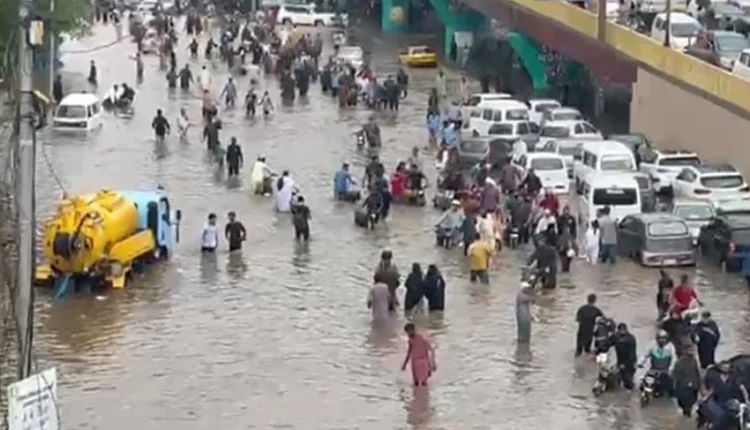Karachi weather alert: Very heavy rains, urban flooding risk from Sept 7
Residents of Karachi have been advised to brace for heavy to very heavy rains with thunderstorms between September 7 and 9, which could lead to urban flooding in several parts of the city.
According to the Meteorological Department, a new weather system will bring rain accompanied by thunderstorms over the next three days. The showers are also expected to be accompanied by strong and gusty winds, raising concerns about damage to infrastructure and disruptions to daily life
Officials warn that due to the intensity of the expected downpours, low-lying areas of Karachi are at high risk of being inundated. The city, already vulnerable to poor drainage and clogged sewerage systems, could once again face waterlogging and traffic chaos if heavy rains persist.
The Met Department stressed the need for citizens to exercise caution, particularly in areas historically prone to flooding.
Despite the forecast for rain, temperatures in Karachi are likely to remain high. The maximum temperature today is expected to reach 35 degrees Celsius, adding to the humidity and discomfort for residents.
With the potential for urban flooding and strong winds, authorities are urging Karachiites to stay alert and avoid unnecessary travel during heavy rains. Citizens are also advised to keep away from low-lying and waterlogged areas, as the risk of flooding could persist until September 9.
Meanwhile, heavy monsoon rains in the upper catchments have triggered flooding in Punjab’s rivers, severely affecting millions across multiple districts.
The Provincial Disaster Management Authority (PDMA) Punjab has issued a fresh update, warning citizens to stay away from riversides and avoid fishing or recreational activities
According to PDMA Punjab, monsoon rains are forecast to continue until September 9 in most districts of the province, raising further flood risks. Current water flows recorded in major rivers are as follows:
- Chenab River: 115,000 cusecs at Marala, 205,000 cusecs at Khanki, 266,000 cusecs at Qadirabad, and 331,000 cusecs at Head Trimon.
- Ravi River: 73,000 cusecs at Jassar, 112,000 cusecs at Shahdara, 114,000 cusecs at Siphon Rail Headworks, 144,000 cusecs at Balloki Headworks, and 122,000 cusecs at Head Sidhnai.
- Sutlej River: 319,000 cusecs at Ganda Singh Wala, 142,000 cusecs at Sulemanki, and 310,000 cusecs at Panjand Headworks.
Authorities have urged citizens to remain cautious and avoid going near rivers for recreation, as water levels continue to rise.






Comments are closed, but trackbacks and pingbacks are open.